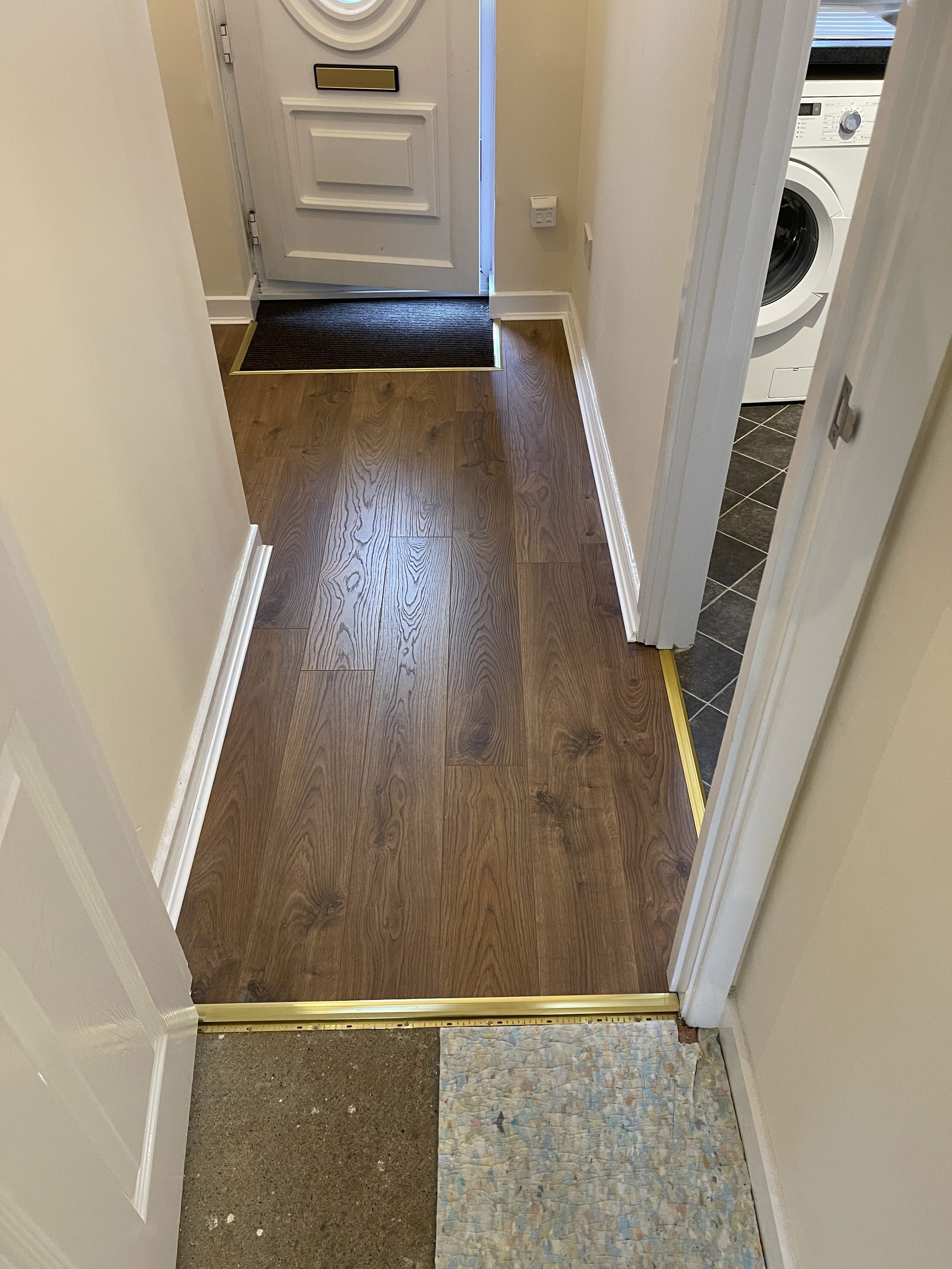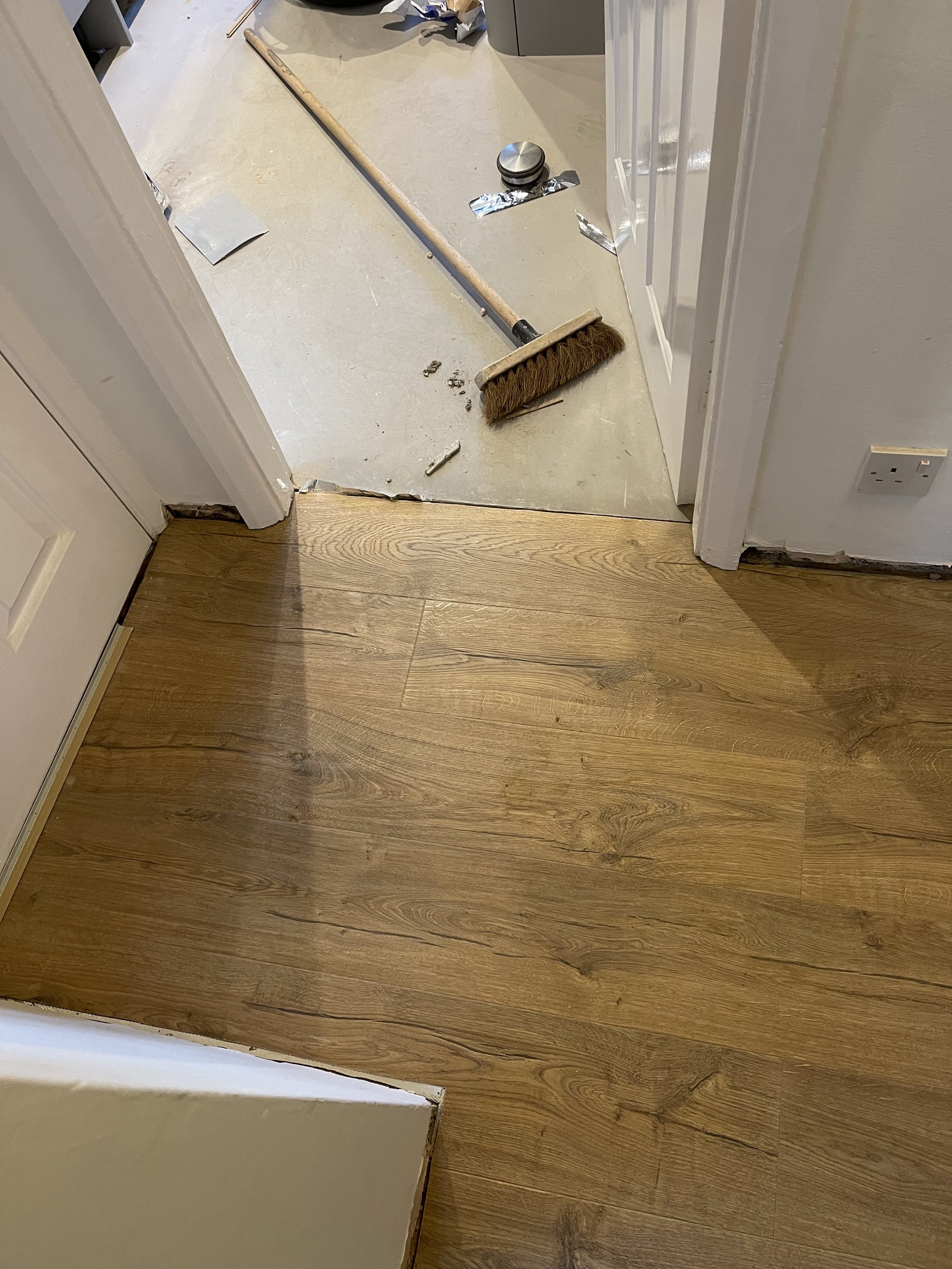Laminate Flooring Explained
Written by
Jack Williams, owner of Crescent Flooring
Published
July 24th, 2023
When it comes to flooring options, the choices are vast. One type of flooring that has gained popularity due to its affordability, durability, and aesthetic appeal is laminate flooring. In this post, we'll delve into what laminate flooring is, discuss its various types, identify its common uses, weigh its pros and cons, and answer some frequently asked questions about laminate flooring.
What is Laminate Flooring?
Laminate flooring is a synthetic flooring product that is designed to mimic the appearance of hardwood, stone, or other natural materials. It is composed of several layers: the top layer is a hard, transparent protective layer, beneath which is a high-resolution photographic layer that provides the flooring's desired look. The core layer, usually made of high-density fiberboard (HDF), provides durability and stability, while the bottom layer acts as a moisture barrier to prevent warping.
There are several types of laminate flooring, each offering unique characteristics. The two primary types are distinguished by their installation method: glueless-click and glued laminate. Glueless-click laminate, as the name suggests, requires no adhesive and can be quickly installed due to its interlocking design. Glued laminate, on the other hand, requires the planks to be glued together during installation, but it often offers superior water resistance.
Further differentiation arises from the style and appearance of the laminate, such as wood-look laminate, stone-look laminate, or tile-look laminate. Each of these mimics the appearance of the respective natural material, providing a wide variety of design options.
Laminate flooring is incredibly versatile, finding its way into various spaces in both residential and commercial environments. Its durability and ease of maintenance make it an excellent choice for high-traffic areas like living rooms, hallways, and offices. Its wide variety of styles also make it a popular choice for bedrooms and dining rooms, where the look of natural wood or stone may be desired without the associated cost or upkeep.
Pros and Cons of Laminate Flooring
Laminate flooring offers a host of advantages. It's cost-effective, often providing the look of more expensive materials without the high price tag. It's also highly durable, able to resist scratches, dents, and stains – a great option for households with pets or children. Additionally, laminate flooring is straightforward to install and easy to maintain, requiring only regular sweeping and occasional mopping.
Despite its many benefits, laminate flooring has a few drawbacks. While durable, it doesn't last as long as hardwood or stone, and once damaged, it can't be refinished – only replaced. It may also feel less comfortable underfoot than natural materials, and while it does a great job imitating the look of wood or stone, it doesn't quite match the feel or warmth of these natural materials.
See examples of our laminate flooring projects
Below is a small selection of the laminate flooring projects we’ve completed.




Laminate Flooring FAQs
Q: Can laminate flooring be installed in bathrooms or kitchens?
A: While laminate flooring can be used in kitchens, caution should be taken as standing water can damage it. It's generally not recommended for bathrooms, where water is frequently present.
Q: How long does laminate flooring last?
A: With proper care and maintenance, laminate flooring can last up to 20 years.
Q: Can laminate flooring be installed over existing flooring?
A: In many cases, yes. As long as the existing floor is flat and stable, laminate can be installed on top.
Q: Does laminate flooring scratch easily?
A: Laminate flooring is highly resistant to scratches, making it ideal for homes with pets or high foot traffic.
Q: Is laminate flooring good for people with allergies?
A: Yes, laminate flooring is an excellent choice for people with allergies. It doesn’t harbour dust mites or allergens and is easy to clean.
Q: Is laminate flooring suitable for underfloor heating?
A: Most laminate flooring is suitable for use with underfloor heating, but it’s important to check with the manufacturer or supplier to ensure compatibility.
Q: How does laminate flooring fare with pets?
A: Laminate's durability and scratch resistance make it a suitable choice for homes with pets. However, the relatively hard and slick surface of laminate might be less comfortable for pets compared to other flooring options.
Interested in laminate flooring?
If you’d like a free, no-obligation quote for your own flooring project, click the button below and fill in our contact form. We’ll be in touch within 48-hours.
If you’d prefer, you can also email jack@crescentflooring.co.uk or call 07814 410413.
